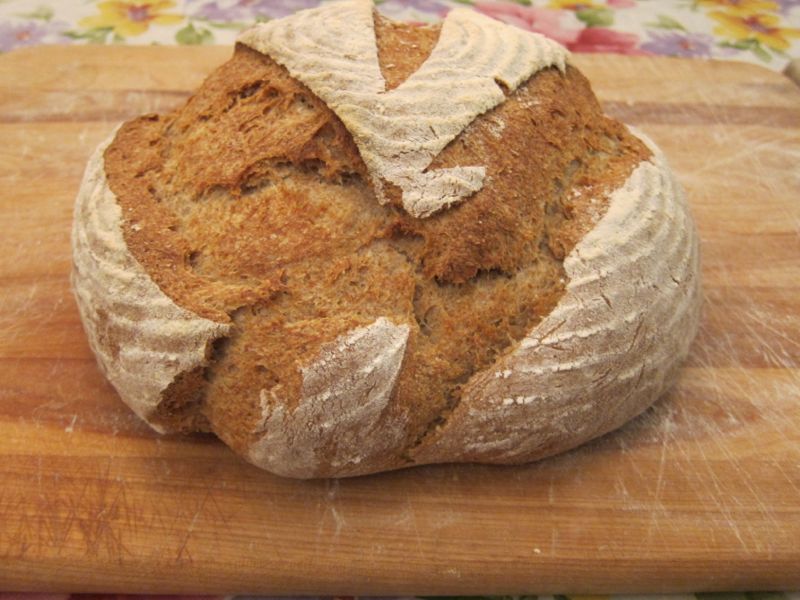Valais Rye Bread - and a tart, some soup, for chilly autumn nights
- Log in or register to post comments
- 6 comments
- View post
- txfarmer's Blog


 This is one of the first bread recipes I tried at home some fifteen years ago and still remains my favorite ever since. This is a super easy bread roll recipe. You don't need any technical know-how, expertise, skills or experience to bake this bread recipe. It's all very easy and practical, You don't even need a scale! And the whole mixing, shaping and baking process is only +/- 60 minutes.
I got this recipe from a handbook used in food science and technology class which has been modified by me to make it even more easier.
This is one of the first bread recipes I tried at home some fifteen years ago and still remains my favorite ever since. This is a super easy bread roll recipe. You don't need any technical know-how, expertise, skills or experience to bake this bread recipe. It's all very easy and practical, You don't even need a scale! And the whole mixing, shaping and baking process is only +/- 60 minutes.
I got this recipe from a handbook used in food science and technology class which has been modified by me to make it even more easier.Okay this is now the best thing that I have ever baked:

 If you live in New York like me you are spoiled as there is little doubt we have more bagel shops than anywhere in the country and most of them are very good. I have tried bagels in other cities and usually they taste like a dense tasteless ball of dough. Since I usually can get great bagels in my town I usually don't make them myself but I figured I would give it a go with a twist of cour
If you live in New York like me you are spoiled as there is little doubt we have more bagel shops than anywhere in the country and most of them are very good. I have tried bagels in other cities and usually they taste like a dense tasteless ball of dough. Since I usually can get great bagels in my town I usually don't make them myself but I figured I would give it a go with a twist of cour
Round one of this fight can be found at this blog post.
The problem I had the first time was insufficient hydration. I certainly solved that problem...
I changed a bunch of things around this time, resulting in a far superior flavor (IMO), but going completely overboard on hydration to the point that it was more like ciabatta than bread. Here's what I did:
To see the beginning of this bake go to the following link and go down below *********************************
I baked this pie early in October, because it's our very favorite pie anytime of the year...especially when the yams 'Garnet' perfered, are good and heavy with their rich fresh tasty yummieness.
Looking at txfarmers lovely custard pie has encouraged me to post this recipe to share for this 'pie season' and hope some of you might enjoy it for the coming holidays as much as we do.
We had plans to make a pot of barszt (borscht) this weekend, so I made a rye loaf to go with it.

I leavened it with both my starter, which I fed with dark rye flour the evening before, and a teaspoon of instant yeast. The loaf itself was about 30% dark rye flour, 70% bread flour. The hydration... very approximate.